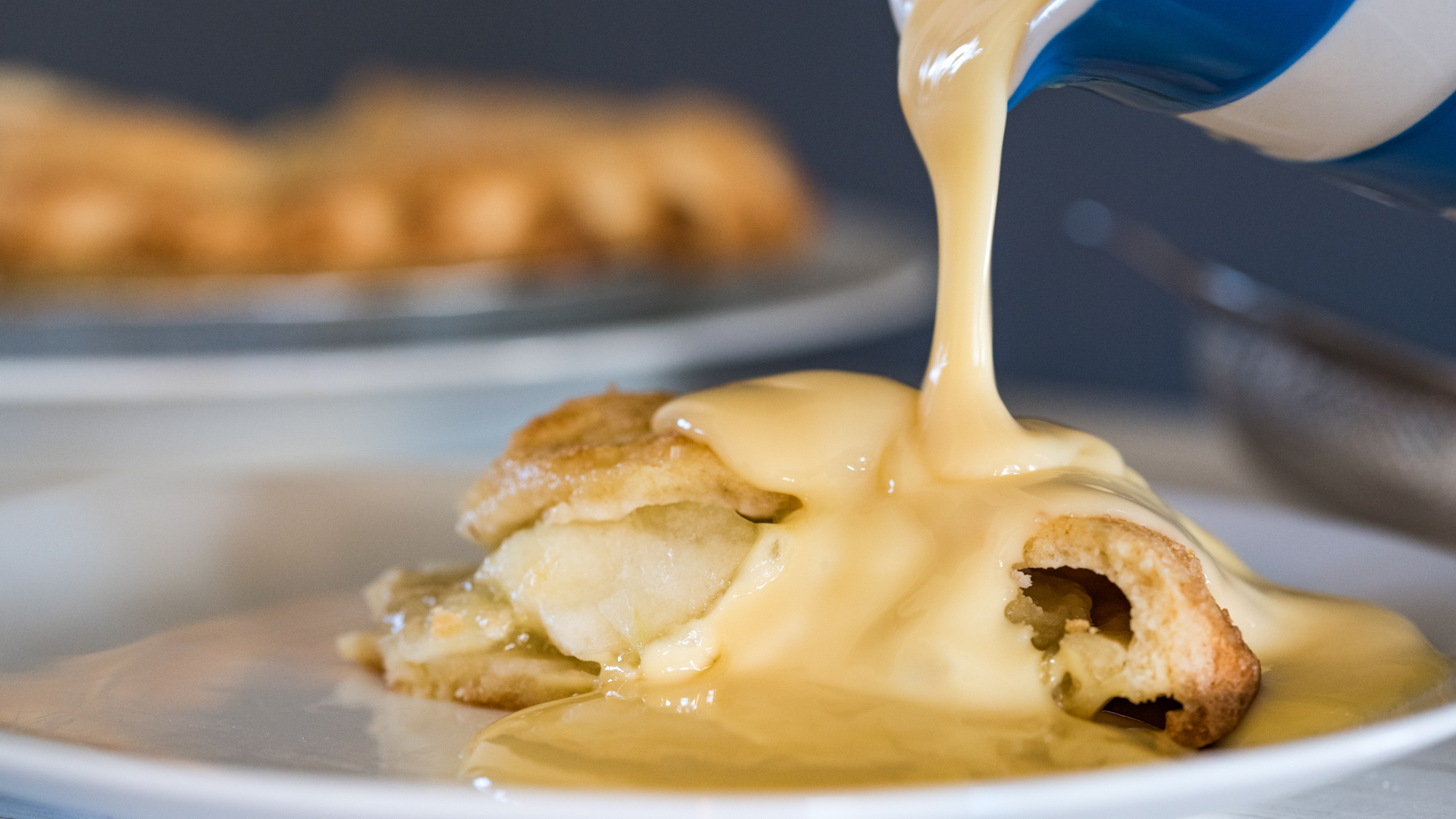How To Make Proper Creme Anglaise
This method bucks tradition, which has you whisk the sugar and yolks together before tempering them with the hot cream, then stirring the mixture over a low flame until thickened to nape (This term describes the thick and smooth viscosity of custard, when it hangs off the back of a spoon). By adding the sugar to the cream and bringing it to a full rolling boil before tempering it with the egg yolks, the residual heat is most often enough to thicken the egg yolks on contact, with no additional cooking required. If you find your creme Anglaise still isn't thickened after attempting this, you can resort to tradition, place the custard back in the pot, and stir the custard over low heat until it's thick. A gentle figure '8' motion with attention to the bottom and sides of the pot is the correct stirring technique for creme Anglaise.
Creme Anglaise
- 150 g egg yolks
- 100 g sugar
- 200 g milk
- 300 g cream
- 1 vanilla bean
- Prepare an ice bath by filling a large bowl 2/3 of the way with very icy ice water, and place it in the refrigerator to keep it cold. Place a fine mesh strainer and a medium-sized bowl on the counter.
- Place the egg yolks in a medium bowl and whisk them together until even. Wet a kitchen towel lightly, and roll it up as if you were going to snap someone in the locker room. Wrap this twisted towel into a ring big enough to hold the bowl with the egg yolks. Leave this secured bowl on the counter near the stove.
- Place the milk, cream, and sugar in a pot. Split the vanilla bean lengthwise with a knife, then use the tip of the knife to scrape the tiny vanilla seeds from the pod, adding both pod and seeds to the pot with the dairy. Bring the vanilla cream to a full rolling boil, stirring occasionally to avoid scorching.
- Remove the pot from heat, and with a whisk in one hand and the pot in another, carefully add about 1/2 a cup of the hot cream to the egg yolks, while whisking. The wet towel ring should keep the bowl in place while your hands are multitasking.
- When the eggs have been evenly mixed with the addition of hot cream, whisk them back into the pot of hot cream. The residual heat from the recent boil should be enough to denature the proteins and thicken your creme Anglaise—you should see the texture change within 10 to 15 seconds from a thin cream to a thick sauce. If this does happens, congratulations, you've made a velvety smooth stirred custard. Immediately strain the custard into the prepared bowl and place the hot bowl in the ice bath. Stir the creme Anglaise in the ice bath until it's cooled below 50 degrees Fahrenheit.
- If the creme Anglaise does not change viscosity, place the pot over very low heat and stir with a rubber spatula until the custard thickens to a velvety thick custard, then proceed with straining and chilling.
- If the custard thickens too quickly and you see it start to curdle, don't panic! There's still time to bring this custard back from the almost-dead. Set up a blender, and place the hot custard inside the cup. Blend the hot custard, starting on low then gradually increasing the speed to medium, to avoid it from erupting from the blender cup. Blend for about 30 seconds, until the custard is smooth again. Do not be tempted to blend above a medium speed, you will aerate your creme Anglaise and make it foamy. Immediately strain the blended custard and chill it in the ice bath.
- Keep the creme Anglaise covered in the refrigerator for up to a week. Use your elegant sauce to dress up every basic dessert that comes into your kitchen this summer, from pies, brownies, and tarts, to French toast. Even a simple bowl of berries will become quite grand with a blanket of your hand-stirred, much-loved creme Anglaise.

